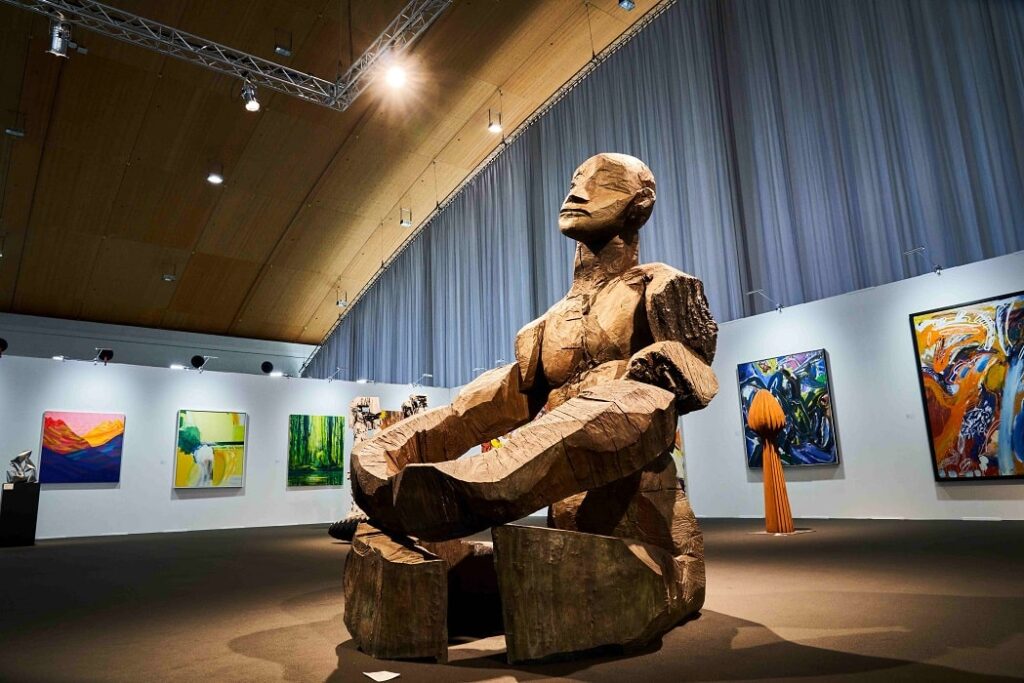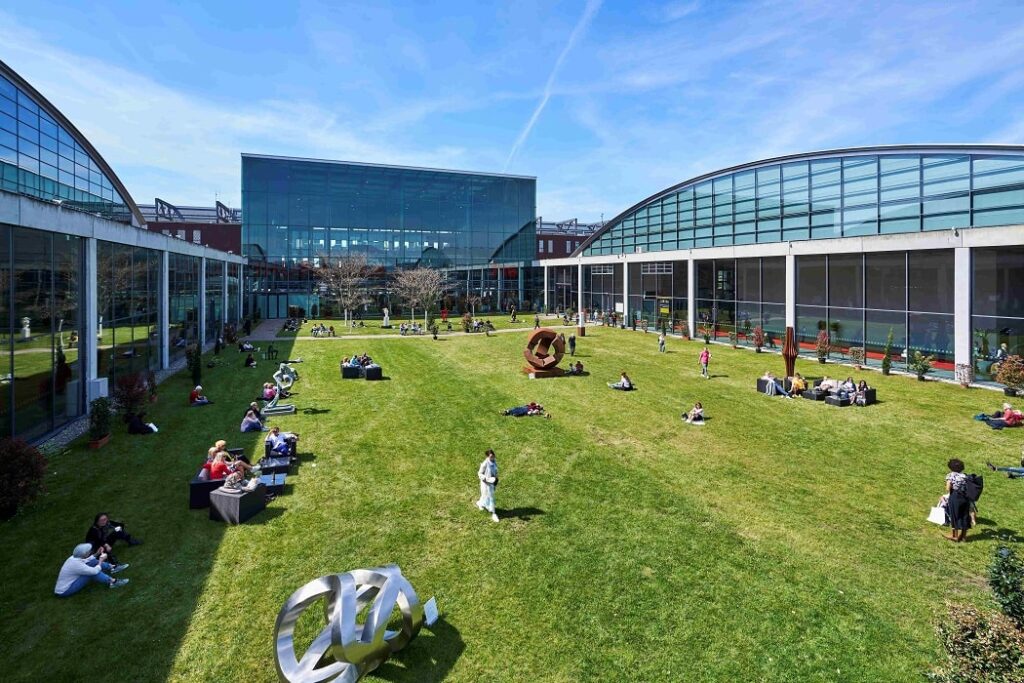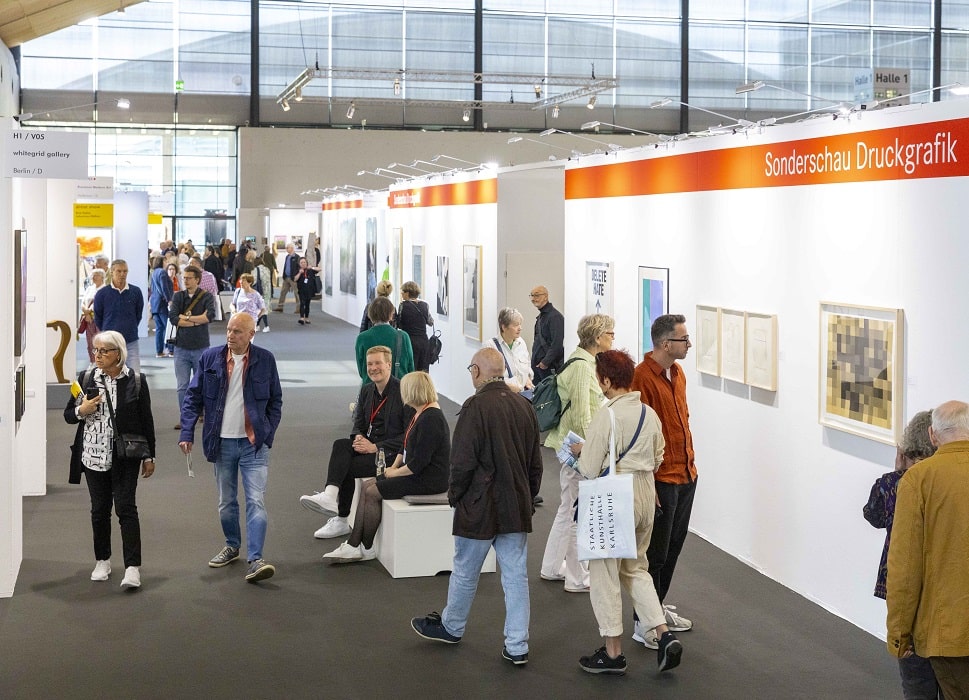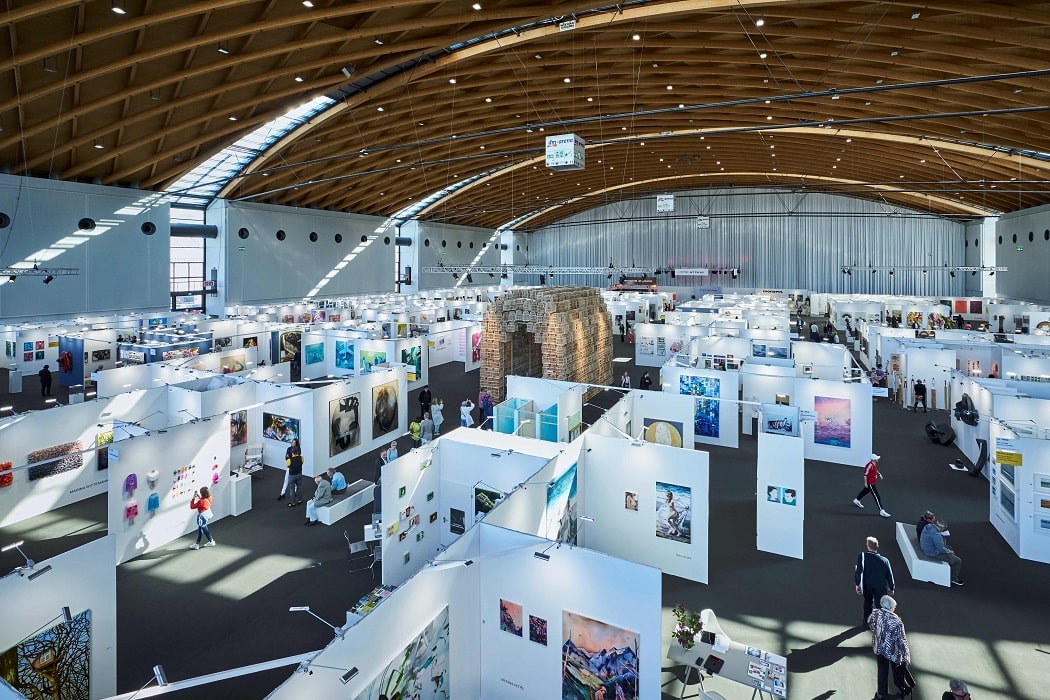177 galleries, 32 of which come from abroad, have prevailed in the art KARLSRUHE 2024 jurying process and will fill the four light-flooded halls with two- and three-dimensional works of art in a wide variety of materials. Proven and new formats go hand in hand with the reduction of the field of participants and will make the fair more qualitative, more structured and more interesting. At the same time, art KARLSRUHE will continue to focus on its expertise in the fields of classical modernism, post-war and contemporary art. At the same time, it radiates into the city of Karlsruhe, combining the local with an overview of 120 years of international art.
Title image: Hallenübersicht – Halle 4, Credits: Messe Karlsruhe / Lars Behrendt
Male artists still dominate the fair at present. But the One Artist Shows make it clear that something is changing here. One third of almost 60 individual artistic presentations are female. Visitors can also discover even more sculptures than in previous years: In addition to the sculpture squares and the sculpture garden in the atrium, there are additional “sculpture spots” and thus even more perception for large-scale works, for example in the visitor circuit.

Classical Modernism in many guises
Classical Modernism continues to enjoy great popularity. This was recently reflected in the auction of a Picasso painting worth millions at Sotheby’s. A total of five galleries, including the newly founded LE Gallery (Keerbergen/Belgium), are showing works by the Spanish artist. Classical Modernism in its various facets, from Impressionism to Surrealism, Cubism and Expressionism, will be represented with outstanding works of art of museum quality. Max Liebermann (Ludorff, Düsseldorf, Nöth, Ansbach), Ernst Ludwig Kirchner (Ludorff, Düsseldorf; Henze & Ketterer, Riehen; St. Gertrude, Hamburg), Erich Heckel (Henze & Ketterer, Riehen; Kampen, Sylt; Schrade, Ehingen) and Marc Chagall (Jeanne, Munich; Raphael, Frankfurt; Kampen, Sylt; Gildens Art, London) are just some of the artists on show.
For decades, women artists have been neglected by museums and the art trade. Something is changing here. Only a few galleries still have an exclusively male programme. Three galleries are bringing exclusively women to the fair in 2024 (BEGE, Ulm; Claeys, Freiburg and Judith Andreae, Bonn).

A broad spectrum of post-war art
Art Informel, ZERO and Concrete Art: all art movements that played an essential role in post-war Europe. art KARLSRUHE has always focussed on these different styles and every year provides a profound overview of the art of the 1950s and 60s. Whether lesser-known Informel pioneers, such as Eugen Batz (Döbele, Mannheim), or names commonly associated with the gestural-spontaneous painting style of the first post-war period, such as Hans Hartung (Brita Prinz, Madrid) or Antoni Tàpies (Cortina, Barcelona and MDA, Höganäs) – the new departure in the visual arts, liberated from the object, is an important area at the fair.
The ZERO group around Heinz Mack, Otto Piene and Günther Uecker proclaimed another new artistic beginning after the war from Düsseldorf. They were the enfants terrible of the Rhenish art scene, celebrating wild parties, releasing balloons into the night sky and conquering the gallery and outdoor space in a lively manner. Their artworks can be viewed at a total of nine stands, including Geißler-Bentler (Bonn) and van der Koelen (Mainz) as well as Geiger (Constance). In keeping with this, the ZKM | Centre for Art and Media is showing an overview of Heinz Mack’s multifaceted oeuvre in a large-scale retrospective. The artist, who is now 92 years old, is making a link to the media art based in Karlsruhe with a further show at the EnBW headquarters.

From Pop Art to the present day
In the canon of post-war art, Pop Art with important representatives such as Andy Warhol, Tom Wesselmann, Claes Oldenburg or Mel Ramos and their artistic depiction of the world of commodities and consumerism should not be missing. But the more critical British style is also represented by David Hockney (Benden & Ackermann, Cologne). It is clear that the decades after 1945 were not only abstract. From here, a line can be drawn to Gerhard Richter and Peter Dreher, but also to the often large-format paintings by Karin Kneffel (Ludorff, Düsseldorf) or the exaggeratedly realistic sculptures by Carolee Feuerman (Hübner & Hübner, Frankfurt). In contrast, the works of Ambra Durante (Friese, Berlin), who was born in 2000 and was awarded the art KARLSRUHE Prize in 2022, clearly show that the stick figure drawings of Keith Haring continue to inspire today.
Concrete art will also be represented at the art fair with key representatives such as Josef Albers (Ludorff, Düsseldorf), Georg Karl Pfahler and Otto Herbert Hajek (Luzán, Berlin) as well as Marie-Thérèse Vacossin (Wagner, Paris), who is better known to insiders. From here, a further line can be drawn into the present to the colour-intensive compositions by Peter Anton (Braunbehrens, Stuttgart) or the colour field paintings by Arvid Boecker (Monica Ruppert, Frankfurt), some of which have been expanded into spatial concepts. Photography and video art, the crossover of media, can also be found at the upcoming art KARLSRUHE, as well as contemporary art in general, which will be linked to the diverse Karlsruhe art scene with its pop-up galleries and project spaces.
WHEN?
Thursday, 22. February until Sunday, 25. February 2024
Thu – Sat 11 am until 7 pm
Sun 11 am until 6 pm
WHERE?
Messe Karlsruhe
Messeallee 1,
76287 Rheinstetten






